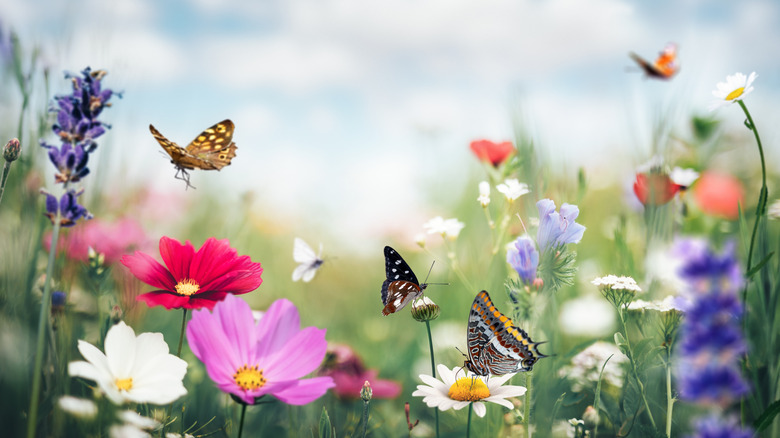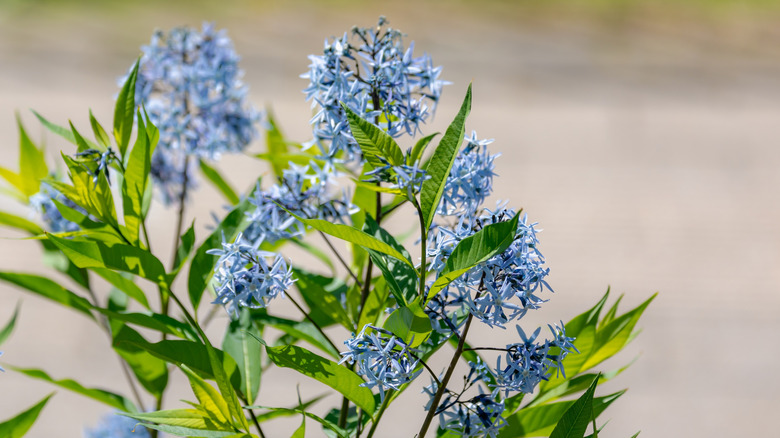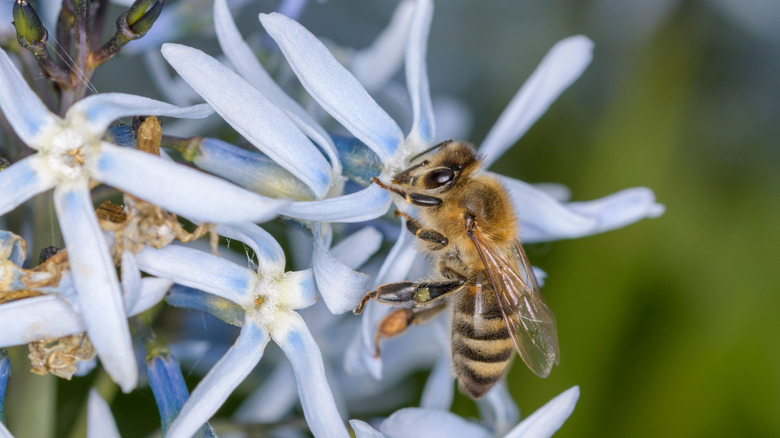The Breathtaking Blue Flower That's A Must-Plant For Hummingbirds And Butterflies
Pollinator populations are declining in North America due to loss of habitat, harmful pesticide usage, and climate change. This means more than just less bees in the world; pollination is essential for a plants' ability to reproduce. Without it, we could lose access to staple foods such as apples, tomatoes, and vanilla. Some estimates have shown pollination contributes roughly $170 billion annually to the global economy. You can do your part for vital members of the ecosystem like hummingbirds and butterflies by starting a native pollinator garden with diverse plants to help them thrive. One plant worth considering for your garden is the eastern bluestar, (Amsonia tabernaemontana) which is abundant in the United States.
Also called "blue dogbane" for its membership in the Apocynaceae (dogbane) family, eastern bluestars are one of many stunning blue flowers you should grow in your garden. These herbaceous perennials originate from the central and eastern regions of the U.S. and can thrive in USDA hardiness zones 3 through 9 – that's just about everywhere in the contiguous states. If you can grow eastern bluestars, they are a colorful and low-maintenance plant with drought resistant properties. The flower is a great draw for hummingbirds, carpenter bees, and butterflies including the mourning cloak.
How to prepare your garden for growing amsonia tabernaemontana
Though eastern bluestars make great additions to any native pollinator garden, they're slow-growing plants that require preparation. From seedlings, these perennials may take two or three years to flower. However, pre-established plants can be propagated by crown division, which if planted in late fall or early spring, could still see results when blooming season hits in mid-spring or early summer. Blue dogbane prefers moist soil with good drainage and a neutral pH level. It can thrive in both full sun and partial shade conditions. However, too much shade could lead the plant to become open, and floppy once grown.
Eastern bluestars grow in clumping formations, which makes them a great dense mound to grow as a backdrop to other plants. Perennial beds and borders are the best places to make room in your garden. There are plants you should avoid trimming during winter, but Amsonia tabernaemontana does require some work during those dormant months to make room for pollinators. Cut back their hollow stems to around 12 or 18 inches, as this will provide a habitat for native bee populations. You'll know it is time for the transition because eastern bluestars are renowned for their late season change of color. After its blue plants finish their three or four week bloom in the summer, the foliage will turn a golden color during fall.
Eastern bluestars offer benefits to pollinators and other plants in your garden
As previously mentioned, eastern bluestars are a great border plant for your native pollinator garden, which leaves room in the center of your yard for companion growth. For example, fire pinks are another striking flower that attract hummingbirds, and these also grow well in USDA hardiness zones 4 through 8 and prefer moist soil. Butterflies also love annual plants like sunflowers, cosmos, and zinnias, and require food sources including the popular milkweed, as well as crops with benefits for your cooking endeavors like parsley, dill, and fennel.
One thing to keep in mind if you plan to grow blue dogbane for your pollinator-friendly garden is to wear gloves during the pruning process. These flowers produce a latex-like sap that can be irritating to sensitive skin. This substance does provide another benefit; the sap of eastern bluestars is toxic to herbivores like deer (but not humans), which will protect the plants from grazing. If it forms the border of your garden, that means the rest of your plants are likely to be better protected, which will encourage pollinators to form their long-term habitats in your garden.


